The Islamic Republic faced a daunting array of challenges as it marked Nowruz, the Persian new year, in March 2023. At home, an increasingly unpopular government was dealing with skyrocketing prices, energy shortages, and new protests over the poisoning of thousands of schoolgirls. Both Supreme Leader Ayatollah Ali Khamenei and President Ebrahim Raisi faced growing criticism.
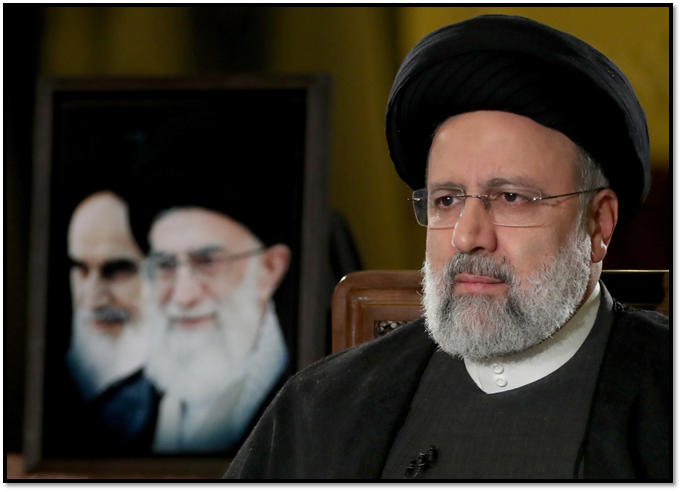
Iran was also increasingly isolated by Western powers for rampant human rights abuses, an accelerating nuclear program, and arming Russia with drones for the war in Ukraine. Its focus shifted to China and Russia. In February 2023, President Raisi became the first Iranian leader to make a formal state visit to Beijing in more than 20 years. President Raisi and President Xi Jinping pledged to strengthen security and economic cooperation. Iran, China and Russia have effectively created a bloc to counter economic sanctions by the West. On March 15, the three countries began a three-day naval exercise in the Gulf of Oman. The following is a guide to the challenges Iran faces in its new year.
Economic Crisis
Iran’s economic prospects were gloomy without a return to the nuclear deal, the condition for lifting U.S. sanctions. Iran was on track for meager growth largely dependent on illicit oil sales. In January 2023, the International Monetary Fund forecast GDP growth would decline to 2 percent in 2023—down from 3 percent in 2022 and 4.7 percent in 2021.
The government did not appear to have a viable strategy for curbing inflation. In February 2023, prices for consumer goods were up 53 percent compared to the prior year. The prices of food and beverages were up more than 70 percent. Iran could face food shortages and even higher prices, the secretary of the Supreme National Security Council, Ali Shamkhani, warned in a letter to President Raisi on February 5. Shamkhani was concerned that the soaring prices of animal feed would in turn hinder production of red meat, poultry, eggs, and dairy products.
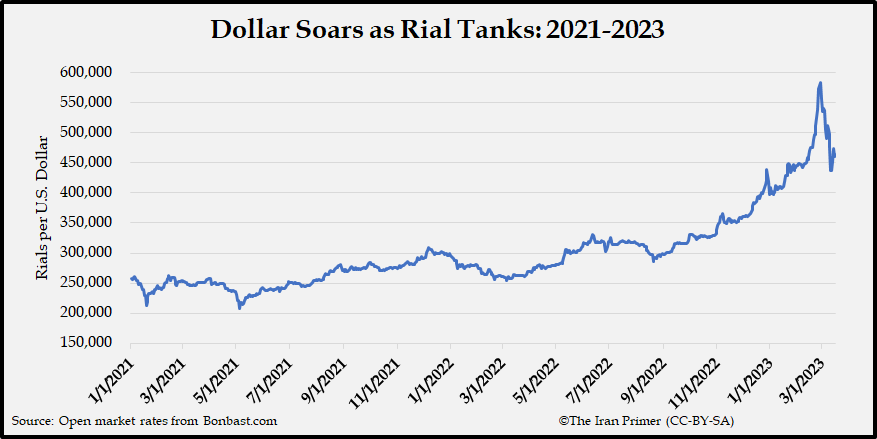
The government also scrambled to stabilize the national currency. In late February 2023, the rial fell to a record low. One U.S. dollar traded for about 600,000 rials. The rial had lost almost half of its value against the dollar since nationwide protests broke out in September 2022. Before the 1979 revolution, the rial traded for from 70 rials to the dollar. Iranians turned to gold and foreign currency to preserve their savings.
In March 2023, the Supreme Labor Council increased the minimum monthly wage by 27 percent to ease the burden on the working class. The new wage, some 53 million rials was equivalent to about $110 dollars at the time.
Search for Investment
In January 2023, the government announced an ambitious plan to sell off state assets worth some $90 billion to generate funds for infrastructure projects. It also hoped to encourage the private sector to turn unused or underutilized properties into productive businesses. The plan was widely criticized in local media for potential corruption and the lack of public accountability.
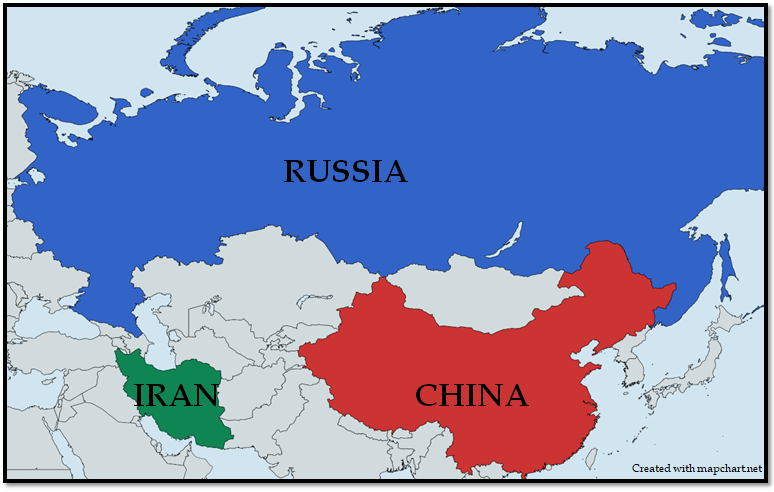
Iran struggled to attract foreign investment since many countries and businesses were hesitant to risk running afoul of U.S. sanctions. Between August 2021 (when President Raisi took office) and January 2023, Iran received less than $6 billion in foreign investment. Russia invested $2.7 billion, more than any other country. China invested only $185 million. “We are not satisfied with this number,” Ali Fekri, the deputy economy minister, complained in January 2023. “They have invested in small and medium-sized [projects] like our neighboring countries, mostly in transportation and transit terminals.”
Isolation could “drag Iran into collapse and instability,” Mohammad Hossein Adeli, a former Central Bank chief and former ambassador to Britain, Canada and Japan, warned in March 2023. Economic development “depends on national power and stable and intelligent interaction with the world.”
Political Crisis
The original protests that broke out in September 2022—over personal freedoms after the death in detention of Mahsa Amini—tapered off in late 2022. Security forces appeared to be in control. Yet in January 2023, Islamic Revolutionary Guard Corps commanders reportedly warned about insubordination. In a meeting with Supreme Leader Ayatollah Ali Khamenei, commanders recounted how rank-and-file officers refused to shoot at protesters. Some IRGC members even attempted to target Khamenei’s home with artillery, according to a leaked summary of the four-hour meeting.
New demonstrations were sparked after some 7,000 schoolgirls at dozens of schools in 28 of Iran’s 31 provinces were poisoned between November 2022 and March 2023. The government initially dismissed the illnesses as “rumors” and blamed the students’ “underlying diseases” and “anxiety,” even though the girls reported distinctive smells, such as citrus fruit or chlorides.
By early March, demonstrations were organized around Ministry of Education offices in Tehran and other provincial capitals, including Mashhad, Rasht, Sanandaj, and Shiraz. The new wave of protests reflected public frustration and suspicion that the government was trying to cover up the incidents.
As the frequency of incidents escalated, Supreme Leader Ayatollah Ali Khamenei described the wave of poisonings as “a huge, unforgivable crime.” On March 6, he demanded that the perpetrators face the death penalty. Five days later, the Interior Ministry announced that more than 100 people in 11 provinces had been detained in connection with the poisonings. Yet the government continued to downplay the crisis. “Less than 10 percent” of cases involved “an irritant gas” that was not “weapons-grade or deadly,” reported the Human Rights Headquarters of the Islamic Republic of Iran, an affiliate of the judiciary. On March 13, on the eve of Nowruz, the judiciary announced pardons for more than 22,000 people arrested in connection with the demonstrations.
Energy and Water Shortages
Iran struggled to meet the domestic demand for energy. In 2022, it had the world’s second-largest natural gas reserves. But demand for natural gas to heat homes, industries and government agencies outpaced production by 35 million cubic meters per day. Consumption spiked in late 2022 as temperatures plummeted, leading the government to cut off gas to 840 government and public entities.
Domestic demand for gasoline to fuel cars, trucks, buses and trains also surged in 2022. Iran will need to resume imports of gasoline if consumption is not curbed, the Iranian Union of Oil, Gas and Petrochemical Exporters warned in December. Iran, which has the world’s third-largest oil reserves, had become a gasoline exporter in 2019. By February 2023, Iran's reportedly had just a five-day supply of gasoline in strategic reserves.
Iran also faced “water bankruptcy” after three years of drought and decades of overuse and mismanagement of water. By December 2022, some 63 percent of dam reservoirs were empty. And 270 cities and towns faced acute water shortages, the CEO of Iran Water and Wastewater Company, Atabak Jafari, reported in January 2023.
Diplomatic Woes and Successes
On the eve of a new year, Iran had managed to improve relations with neighbors and expand ties with Russia and China.
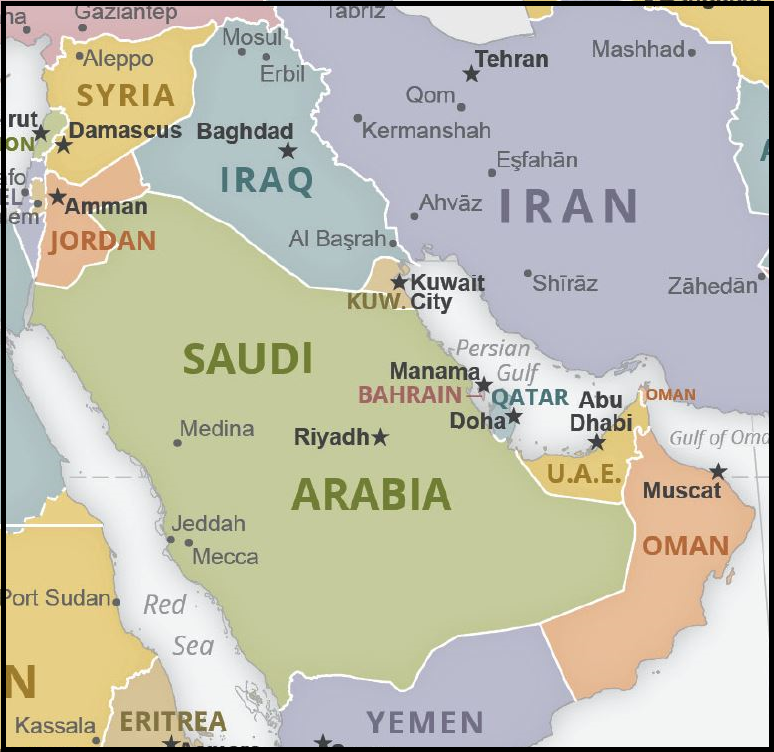 Saudi Arabia: On March 10, 2023, Iran and Saudi Arabia agreed to restore diplomatic ties seven years after severing relations. The regional rivals committed to reopening embassies in Tehran and Riyadh by May. The deal could also bring economic benefits. Within two days, Iran’s currency surged 12 percent against the dollar. By March 12, one dollar traded for 438,000 rials. “There are a lot of opportunities for Saudi investments in Iran,” said Mohammed al Jadaan, the Saudi finance minister.
Saudi Arabia: On March 10, 2023, Iran and Saudi Arabia agreed to restore diplomatic ties seven years after severing relations. The regional rivals committed to reopening embassies in Tehran and Riyadh by May. The deal could also bring economic benefits. Within two days, Iran’s currency surged 12 percent against the dollar. By March 12, one dollar traded for 438,000 rials. “There are a lot of opportunities for Saudi investments in Iran,” said Mohammed al Jadaan, the Saudi finance minister.
The de-escalation in tensions had the potential to have impact regionwide. For years, predominantly Shiite Iran and the Sunni kingdom clashed through proxy wars, particularly in Syria and Yemen. Iran reportedly agreed to stop arming the Houthi rebels in Yemen. The deal, brokered by China, also included the implementation of a security agreement signed in 2001 and a pact to enhance cooperation on trade, investment, technology, and culture signed in 1998.
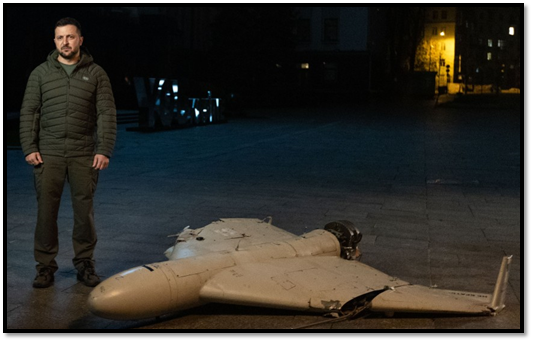
Russia: Iran began a new year with deepening ties to Russia diplomatically and militarily. It became Russia’s top military supporter—providing hundreds of combat and reconnaissance drones as well as ammunition—for the war in Ukraine. Dozens of Revolutionary Guards traveled to Ukraine to train their Russian counterparts.
Iran, in turn, received “unprecedented defense cooperation” from Russia that included missiles, air defense and electronics, John Kirby of the National Security Council said on Feb. 24, 2023. Iranian pilots were also receiving training on advanced Su-35 warplanes; Tehran reportedly expected delivery of 24 of the fighter-bombers—as well as attack helicopters, radar and combat training aircraft—in 2023. Russia also provided strategic guidance on how to deal with protests.
China: Iran began the new year looking to expand trade and bilateral ties with China, reflected in President Raisi’s three-day state visit to Beijing in February 2023. Despite U.S. sanctions, it reportedly exported more than 1.2 million barrels of oil per day to China – a new record – between November 2022 and January 2023. China was Iran’s top trade partner from 2012 to 2022. “Iran is very important as a source of energy, but also as a provider of the security in the region,” Nasser Hadian, a professor of political science at the University of Tehran, told The Iran Primer. “In the future, Iran and China are going to be very closely interdependent.”
Saudi, Iran restoration of ties a 'victory for dialogue'-China’s Wang Yi https://t.co/8DhEHBrQAb pic.twitter.com/8KQ05djtzS
— Reuters (@Reuters) March 10, 2023
China’s diplomacy in brokering the rapprochement between Iran and Saudi Arabia widened the scope of engagement, which had historically centered on commerce. “I appreciate the constructive role of the People's Republic of China in supporting the development of relations between countries, which is necessary for solving challenges and increasing peace and stability and promoting international cooperation,” Ali Shamkhani, the secretary of the Supreme National Security Counci, said on March 10.
Iran heralded the accord as a “political earthquake” and a reflection of declining U.S. influence. “With this agreement, the post-American era in the Persian Gulf region has begun,” Major General Yahya Rahim Safavi, a military advisor to the supreme leader, said on March 12.
